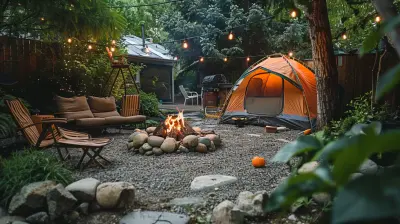Creating a Sensory Garden for Children
16 June 2025
Children are natural explorers. They touch, smell, see, hear, and even taste their surroundings to understand the world. A sensory garden is the perfect way to engage their senses, encourage outdoor play, and promote learning—all in one magical space! Whether you have a large yard or just a small patio, you can design a sensory garden that nurtures your child's curiosity and creativity.
In this guide, we’ll walk you through everything you need to know about creating a sensory garden for children—from choosing the right plants to incorporating fun textures, sounds, and scents. 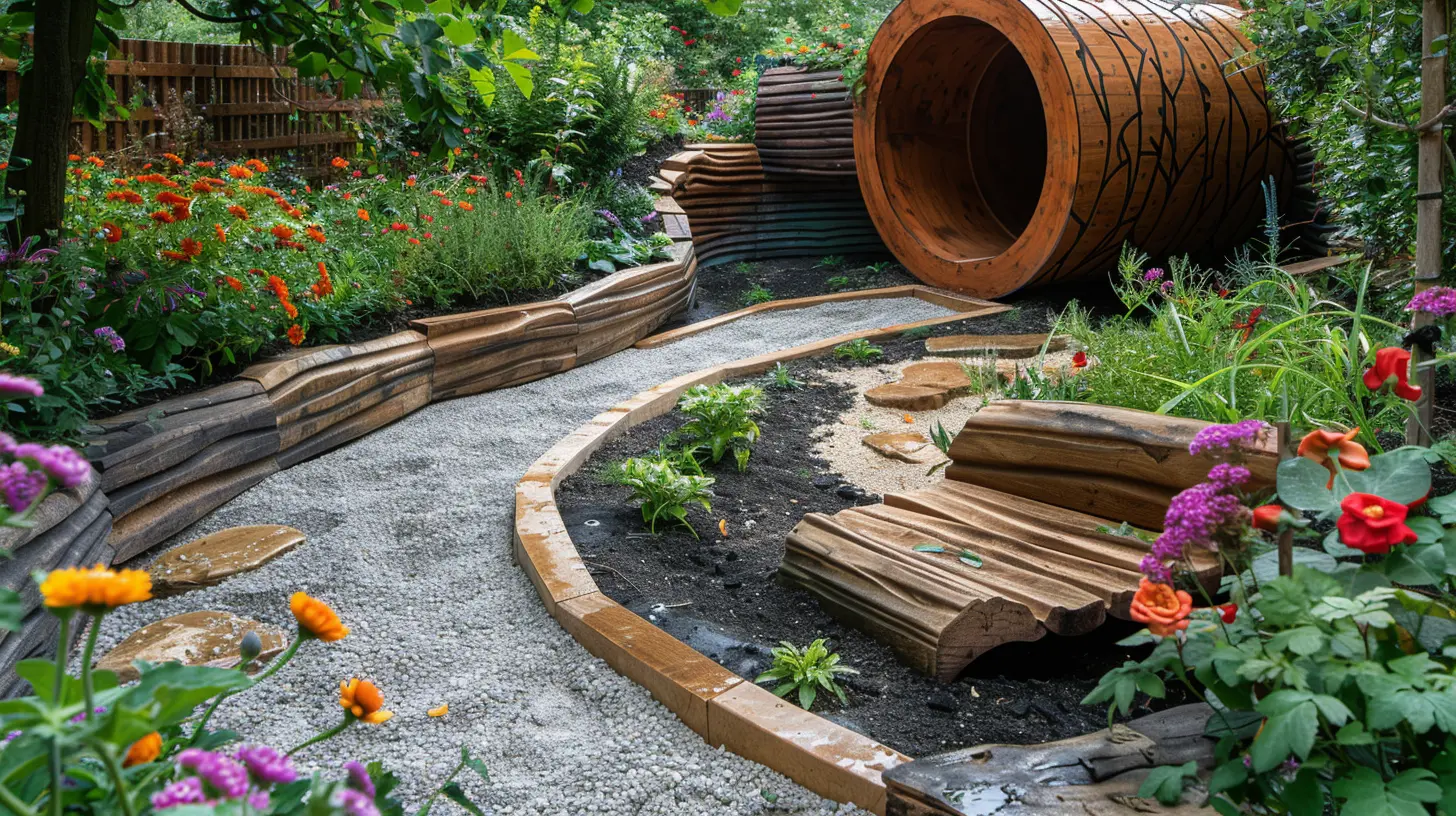
Why a Sensory Garden?
A sensory garden isn’t just about growing plants—it's about creating an interactive experience that engages all five senses:- Sight: Bright colors and varying shapes help stimulate vision.
- Touch: Different textures—smooth, rough, soft, and spiky—offer hands-on discovery.
- Smell: Fragrant flowers and herbs spark curiosity and create memorable scents.
- Sound: Rustling leaves, wind chimes, or water features provide calming natural sounds.
- Taste: Edible plants, like berries and herbs, let kids safely taste their garden.
Beyond the fun factor, sensory gardens have several developmental benefits:
✓ Improve fine and gross motor skills
✓ Encourage mindfulness and relaxation
✓ Support cognitive and emotional growth
✓ Promote a connection with nature 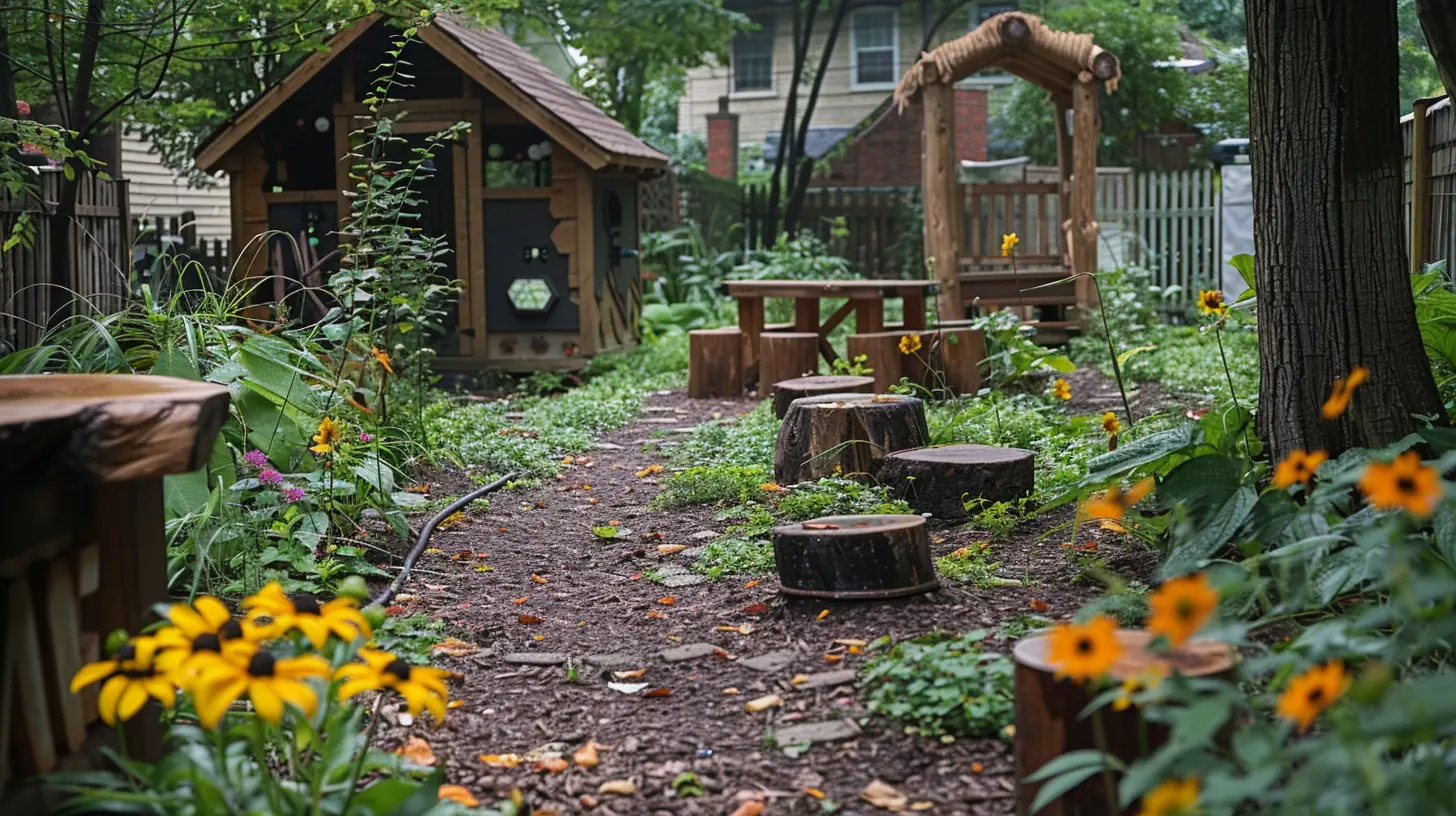
Planning Your Sensory Garden
Before grabbing your gardening tools, take a moment to plan. Think about the space available, your child’s age, and how you can incorporate different sensory elements.1. Choose the Right Location
Your garden doesn’t have to be huge! A small corner of the yard, a raised bed, or even a collection of potted plants can work wonders. Ideally, pick a safe, sunlit, and easily accessible area with enough room for kids to play.2. Select Child-Friendly Plants
Not all plants are safe for little hands! Avoid toxic plants and stick with child-friendly, non-toxic options. Here are some great choices for each sense:- Sight: Sunflowers, marigolds, snapdragons, and vibrant coleus
- Touch: Lamb’s ear (soft and velvety), ferns, moss, succulents
- Smell: Lavender, mint, lemon balm, jasmine, rosemary
- Sound: Bamboo (rustles in the wind), ornamental grasses, seed pods that rattle
- Taste: Strawberries, cherry tomatoes, basil, mint, chives 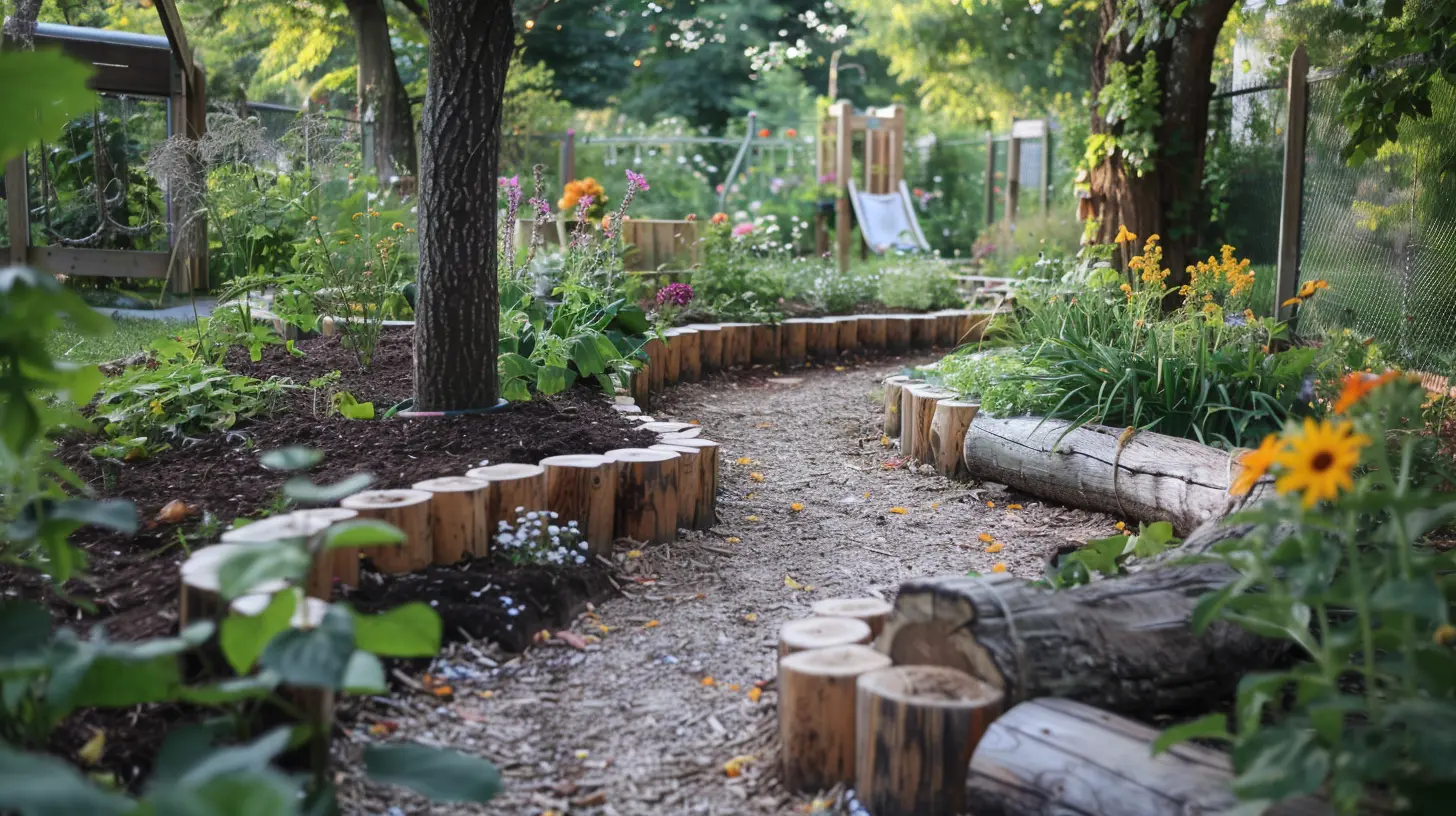
Creating a Multi-Sensory Experience
A truly engaging sensory garden includes more than just plants. Let’s add features that stimulate more than one sense at a time!1. Textures for Touch Exploration
Kids love to explore textures with their hands and feet. Mix soft, smooth, rough, and bumpy elements.✅ Stepping stones made of different materials (wood, pebbles, brick)
✅ Sand or dirt areas for digging and playing
✅ Logs, tree stumps, or wooden planks for balance challenges
✅ Water features like small fountains or splash areas
2. Aromatherapy in the Garden
Scents have a strong connection to memory and emotions. Creating a fragrant path with lavender, roses, and peppermint will make your garden smell heavenly! Try crushing leaves of scented plants like basil or lemon balm to release natural aromas as kids play.3. Sounds That Create a Peaceful Atmosphere
Incorporating sound elements can soothe and intrigue children.🎵 Wind chimes for a magical tinkling sound
🎵 A small bubbling fountain to mimic nature’s water sounds
🎵 Rustling ornamental grasses or bamboo for a natural whisper
🎵 DIY musical walls with hanging pots, pans, or wooden chimes
4. Tasty Treats Straight from the Garden
A garden wouldn’t be complete without edible delights! Kids love tasting fresh herbs and fruits straight from the plant. Consider planting:🍓 Strawberries – Sweet and fun to pick
🍅 Cherry tomatoes – Juicy and easy to snack on
🌿 Mint and basil – Wonderful aromatic herbs for little chefs
🥕 Baby carrots or radishes – Crunchy and rewarding to grow
5. Engaging Play Areas
A sensory garden can also be a play space! Adding a few fun structures makes it more interactive.✅ A mini maze with hedges or stepping stones
✅ A wooden teepee or hideaway nook for quiet time
✅ A digging pit with soft soil or sand for little hands to explore
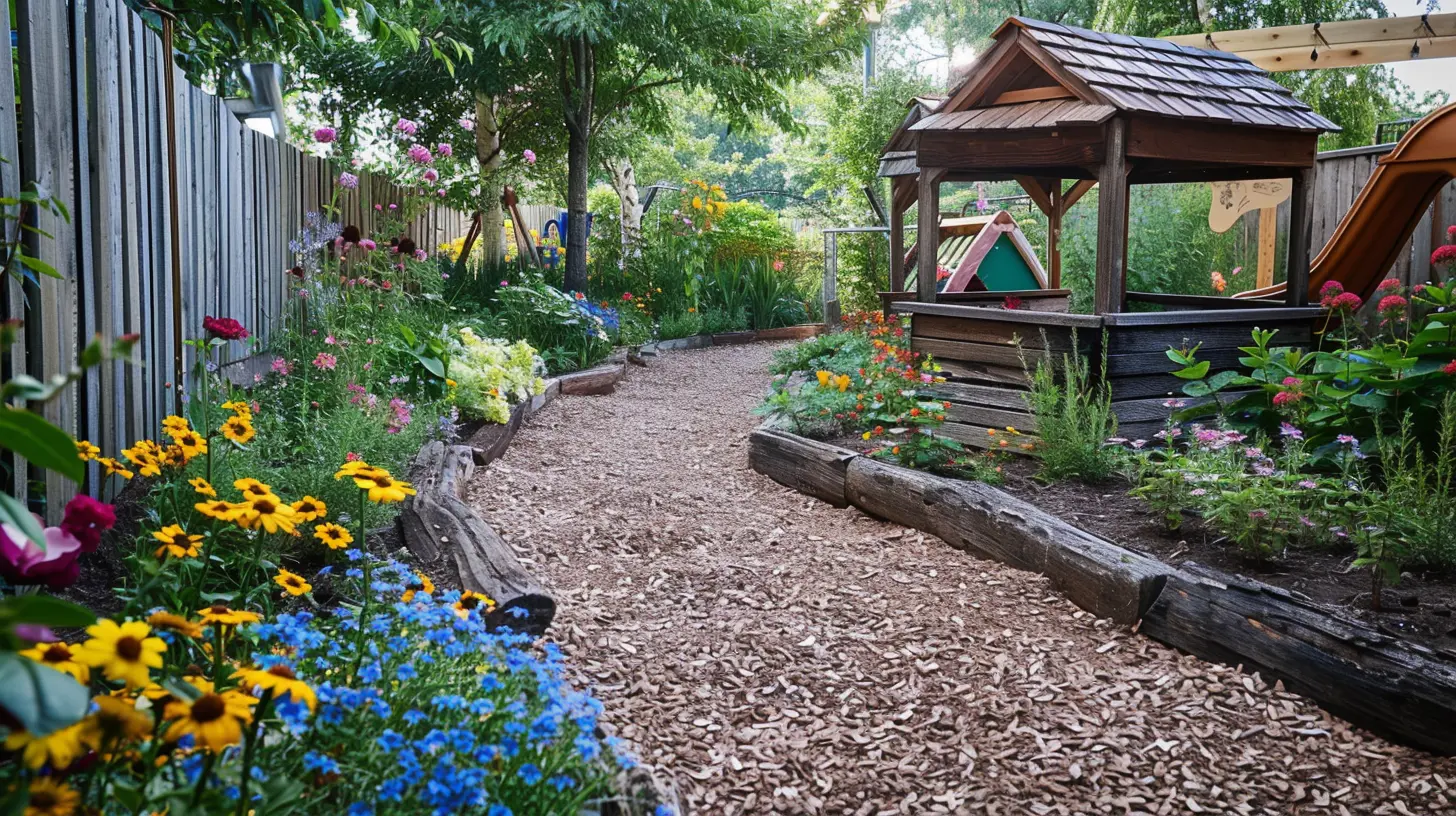
Making the Garden a Safe Space
While sensory gardens are meant for fun, safety is a priority when designing an interactive space for children.✔️ Stay Away from Toxic Plants – Some common plants (like foxglove, oleander, and azaleas) can be harmful if touched or eaten. Always check plant safety before including them in your garden.
✔️ Choose Soft Paths – Avoid sharp gravel or rough stone paths. Opt for grass, bark mulch, or rubber matting for safe footing.
✔️ Avoid Thorny or Prickly Plants – While roses are beautiful, their thorns can be a hazard. Stick with soft-leaved and non-spiky plants.
✔️ Supervise Young Kids – Small children might try to taste things they shouldn’t. Keep an eye on them while exploring.
Keeping the Sensory Garden Engaging Year-Round
A sensory garden evolves with the seasons, ensuring there’s always something new to enjoy!🌱 Spring: Plant bright flowers and early herbs like chives and mint. Fresh scents fill the air!
🌞 Summer: Enjoy sunflowers, berry-picking, and buzzing bees. Perfect for outdoor play!
🍂 Autumn: Collect colorful leaves, watch seed pods fall, and enjoy crunchy textures.
❄️ Winter: Evergreen plants, pinecones, and a small bird feeder keep the garden alive.
By adding seasonal activities, your garden will remain a year-round wonderland!
Encouraging Children to Connect with Nature
A sensory garden isn’t just for playing—it’s a hands-on learning experience!🌿 Gardening Together – Let kids help plant seeds, water plants, and harvest herbs.
🎨 Nature Art – Use leaves, flowers, and twigs for craft projects.
📖 Storytime Outdoors – Bring books into the garden for a magical reading environment.
🔍 Bug Watching – A magnifying glass turns the garden into an exciting world of discovery!
By involving children in the process, they’ll develop a deeper appreciation for nature and learn valuable life skills like responsibility and patience.
Final Thoughts
Creating a sensory garden for children is one of the most rewarding projects you can undertake. It’s more than just a garden—it’s a sanctuary of discovery, relaxation, and learning. Whether your child is feeling playful, creative, or in need of a little quiet time, a sensory garden offers something for everyone.So, grab some soil, pick out your favorite plants, and start crafting a magical space where little hands, feet, and noses can explore to their heart’s content!
all images in this post were generated using AI tools
Category:
Outdoor ActivitiesAuthor:

Zelda Gill
Discussion
rate this article
2 comments
Zelda Schultz
This article beautifully highlights the benefits of sensory gardens. I love the idea of engaging children’s senses in nature play!
June 20, 2025 at 2:24 AM

Zelda Gill
Thank you! I'm glad you enjoyed the article and appreciate the importance of engaging children's senses through nature play.
Summer Collins
Creating a sensory garden? Love it! Just remember, while your kids sniff flowers and squish mud, you might want to keep an eye out for that ‘nature-loving’ little one who thinks dirt is an edible delicacy. Good luck!
June 17, 2025 at 4:00 PM

Zelda Gill
Thank you! Great reminder to keep a watchful eye on our little explorers while they enjoy nature’s wonders!

